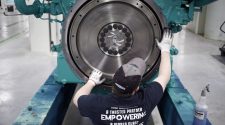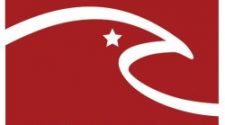Rethink what business you’re actually in.
How much of a difference does technology make as companies attempt to compete in a digital economy? Domino’s, the pizza chain, employs more IT people than other types of employees, and digital now represents almost two-third of orders. Signify, formerly called Philips Lighting, now concentrates on delivering data-driven smart lighting solutions, versus simply selling light bulbs.
Terry Jones, founder of Travelocity and founding chairman of Kayak.com, sees opportunities for companies of all persuasions, and technologies such as cloud, IoT and AI are accelerating their match into this new world. In his recent book, Disruption Off: The Technological Disruption Coming for Your Company and What to do About It, he points out that ultimately, the key is to own the edge, he says: “The edge in business used to be location… But the edge has moved. Today, the edge is the edge of the glass. That’s because the edge of the glass is where the customer lives.”
The new rules of business means more than simply producing, selling and shipping products. It’s not enough to own the product, says Jones. “You must own the edge, and you also must own assets and the outcome.”
Jones has four acronyms businesses seeking to get their foothold on the edge of the technology disruption revolution:
Leverage OPA — Other People’s Assets. Many of today’s most disruptive players have business models employ technology that connects customers with physical assets, without having to own or maintain those assets. Very simply, disruptors make it easier to get at these assets than the asset-holders themselves have made it, Jones points out.
Leverage OPI — Other People’s Information. Build a platform “that collects and accumulates data you can then leverage with customers or sell to other markets,” Jones says.
Leverage OAO — Over and Over. Today’s disruptive companies employ subscriptions and SaaS to ensure a continuous stream of business. But it’s more than simply transactions. “The most interesting change to me is the real-time learnings that come from the customer constantly connected to the software.”
Remember, it’s ONI — Outcomes, Not Iron. This is “the model where traditional business can fight back against the disruptors,” Jones points out. “Companies are today selling outcomes like increased productivity, decreased energy usage, increased safety, or decreased maintenance.”
Think what happens when you just keep selling iron,” Jones illustrates. “Your product becomes a very replaceable sub part of a much larger system.”
Every company needs to become a disruptor, he adds. “You only call it a disruption because you didn’t do it.”
















